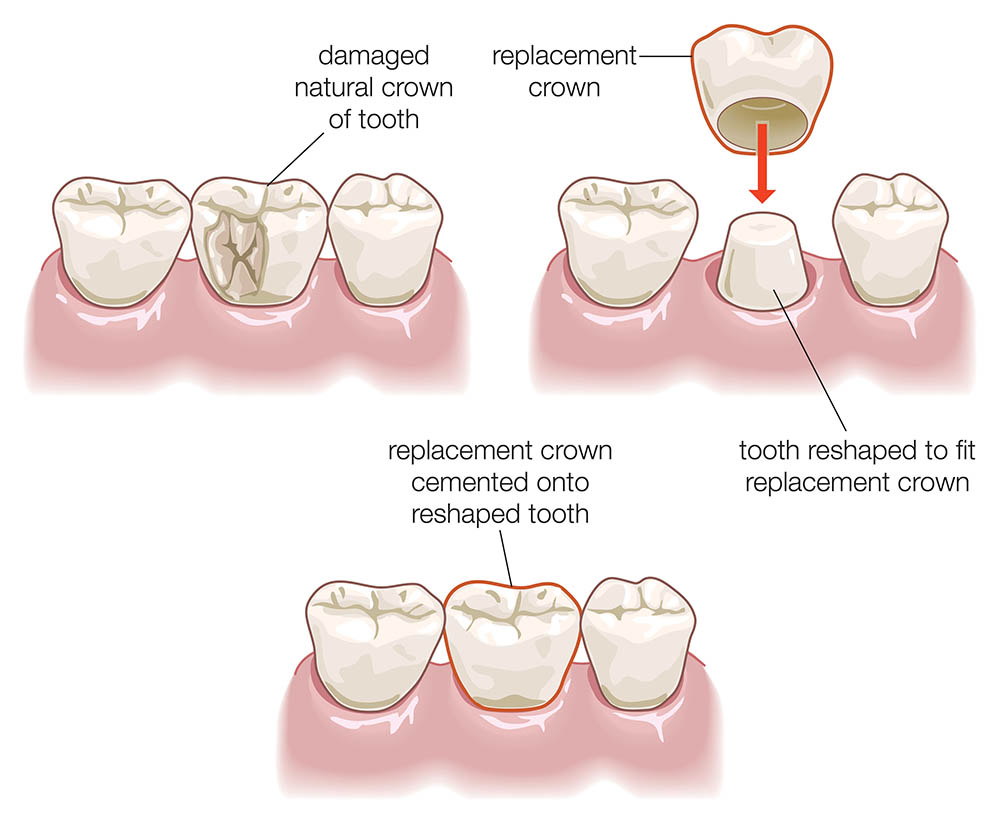+918045133587

This is your website preview.
Currently it only shows your basic business info. Start adding relevant business details such as description, images and products or services to gain your customers attention by using Boost 360 android app / iOS App / web portal.
There are two ways in which your crown preparatio...

There are two ways in which your crown preparation is done. Based on your tooth condition and your preference, it can be a two-day or single visit procedure SINGLE - VISIT PROCEDURE Dental crowns can also be made in a dentist’s office if your dentist has the equipment. This process starts off similarly to the traditional way a crown is made — the first steps are to remove decay and shape the tooth for a perfect fit inside the crown. After these steps, the actual making of the crown is different. In the same-day procedure, a scanning device (a “wand”) is used to take digital pictures of the tooth inside your mouth. The computer’s software creates a 3D model of the tooth from these pictures. The digital design is then sent to another in-office machine that carves the shape of the crown out of a block of ceramic. This method of making a dental crown is called computer-aided design/computer-aided manufacturing (CAD/CAM). In less than 15 minutes, the crown is ready to be cemented into place. TWO-VISIT PROCEDURE You will typically have two visits to the dentist to prepare for a dental crown. In some cases, you may have a dental crown made in your dentist’s office. FIRST-VISITT During the first visit, the tooth that’s going to receive the crown is examined and prepared. X-rays are taken of the tooth and the bone around it. Your dentist might have to do a root canal treatment before your dental crown procedure if there’s any: 1. Tooth decay. 2. Risk of infection. 3. Injury to the tooth’s pulp. 4. Pulp is the soft tissue inside your teeth that contains blood vessels, nerves and connective tissue. The tooth that’s receiving the crown will be filed down across the top and sides. This will make space for the crown itself. The amount of tooth that gets filed away depends on the type of crown you have. All-metal dental crowns are thinner and don’t need as much of the tooth removed as all-porcelain or porcelain-fused-to-metal crowns. If too much of your tooth is missing — due to damage or decay — a filling material can be used to “build up” enough tooth structure for the crown to cover. After reshaping the tooth, a paste or putty is used to make a copy also called a impression, of the tooth that’s going to receive the crown. Impressions of the teeth above and below the tooth that’s getting the dental crown will also be made. This is done to make sure that the crown will not affect your bite. The impressions are sent to a dental laboratory. The laboratory makes the crowns and usually returns them to the dentist’s office in two to three weeks. During this first office visit, your dentist will make a temporary crown to cover and protect the prepared tooth while you’re waiting on the permanent crown. SECOND VISIT At the second visit, the permanent crown is placed on your tooth. First, the temporary crown is removed and the fit and color of the permanent crown is checked. If everything is okay, a local anesthetic (“numbing” drug) is sometimes used to numb the tooth and the new crown is permanently cemented in place. FOR FURTHER ASSISTANCE, VISIT OR CALL US DENTAPEX DENTAL CLINIC, MUTHANALLURU CROSS, SARJA[UR ROAD, DOMMASANDRA. 8369169473

